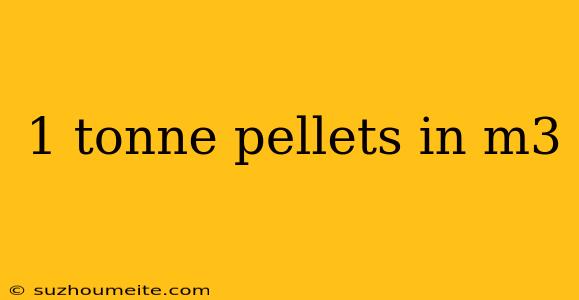1 Tonne of Pellets in m3: Converting Volume to Weight
When working with pellets, it's essential to understand the relationship between volume and weight. One common question that arises is: how many cubic meters (m3) are in 1 tonne of pellets? In this article, we'll explore the conversion process and provide a helpful guide for calculating the volume of pellets.
Understanding Density
The key to converting weight to volume is understanding the density of the material. Density is defined as the mass of an object per unit volume. In the case of pellets, the density varies depending on the type of material, moisture content, and composition.
The average density of wood pellets ranges from 600-750 kg/m3, with some high-density pellets reaching up to 850 kg/m3. For the purpose of this calculation, we'll use a density of 700 kg/m3, which is a common value for standard wood pellets.
Converting 1 Tonne of Pellets to m3
To convert 1 tonne of pellets to cubic meters, we'll use the following formula:
Volume (m3) = Weight (tonne) / Density (kg/m3)
Plugging in the values, we get:
Volume = 1 tonne / 700 kg/m3
Volume ≈ 1.43 m3
So, approximately 1.43 cubic meters of pellets weigh 1 tonne.
Practical Applications
Understanding the volume-to-weight conversion is crucial in various industries, such as:
Logistics and Storage
Knowing the volume of pellets helps in optimizing storage space and transportation. A accurate calculation of volume ensures that containers and warehouses are utilized efficiently.
Supply Chain Management
Accurate volume calculations enable suppliers to quote realistic prices and ensure timely delivery.
Energy Production
In biomass energy production, accurate volume calculations are critical for efficient combustion and energy output.
In Conclusion
Converting 1 tonne of pellets to cubic meters is a crucial calculation in various industries. By understanding the density of the material and using the formula, we can accurately calculate the volume of pellets. Remember to always consider the specific density of the pellets you're working with to ensure accurate calculations.
Remember
Always verify the density of the pellets you're working with to ensure accurate calculations.
